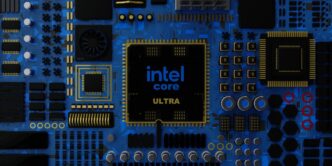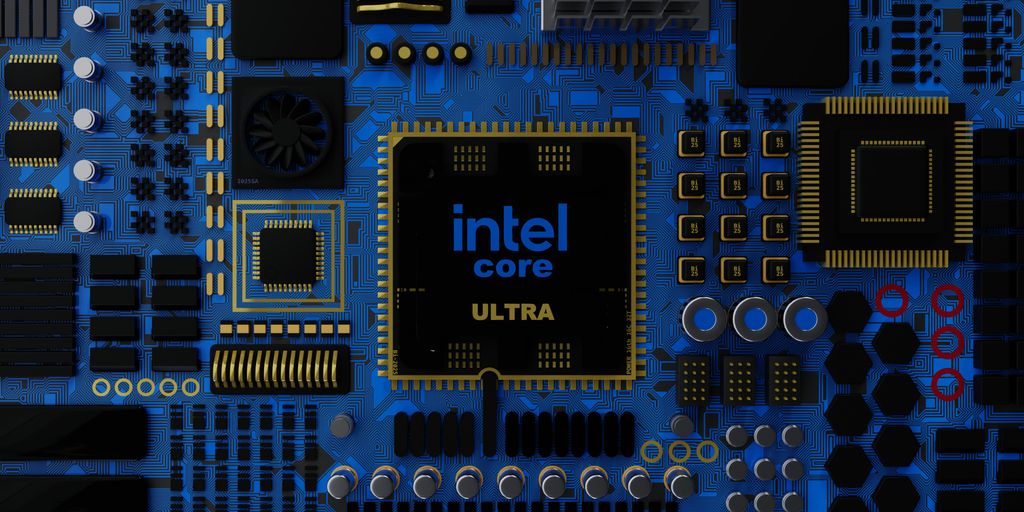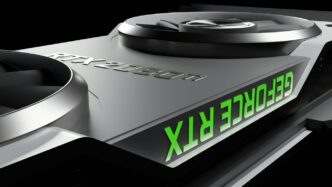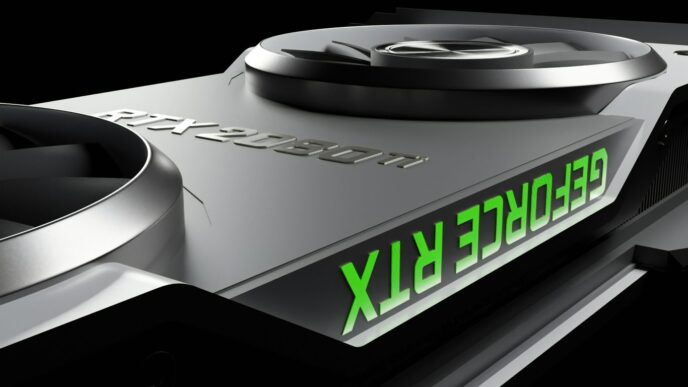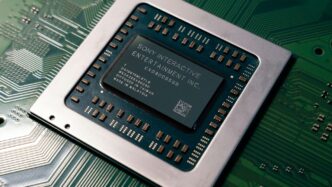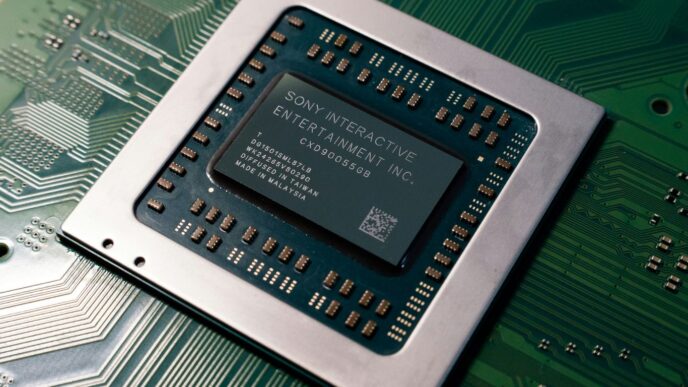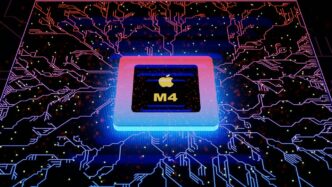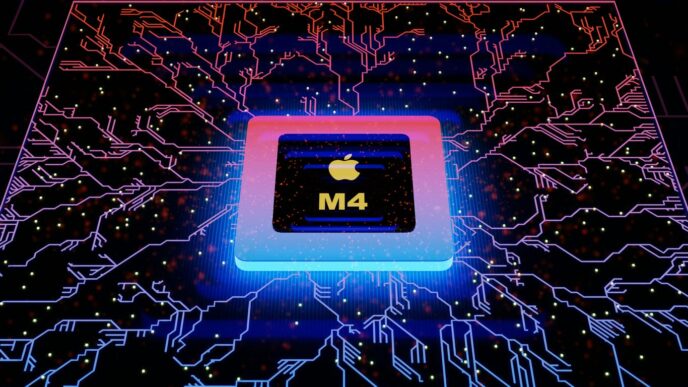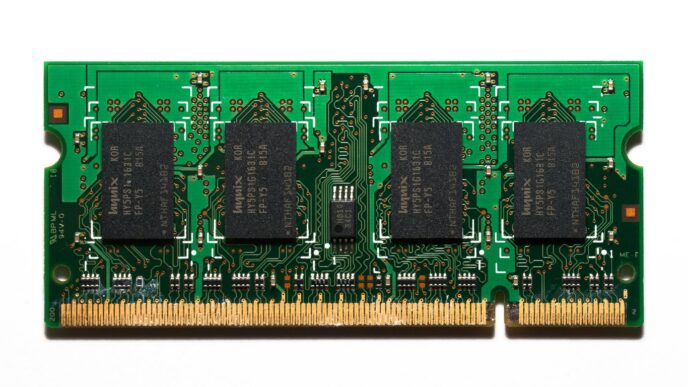So, you’re looking to buy a new computer or maybe just upgrade your current one, and you keep seeing these Intel processors: i3, i5, i7. What’s the big deal, right? It can feel a bit confusing trying to figure out the difference between i processors, especially since they all sound pretty similar. Think of it like car models – they all get you from point A to point B, but some do it with more power, more features, or just a smoother ride. This article breaks down what those numbers actually mean for your everyday computer use.
Key Takeaways
- The numbers 3, 5, and 7 on Intel Core processors generally indicate their performance level, with i7 being the highest, i5 in the middle, and i3 for basic tasks. This isn’t a strict rule about core count or speed, but a general guideline.
- Core count and features like Hyper-Threading (where one core acts like two) and Turbo Boost (which speeds up the processor when needed) are big factors. i5 and i7 processors often have more cores and Hyper-Threading than i3s, and Turbo Boost is common on i5 and i7.
- Cache size is like a super-fast, small memory right on the processor. A bigger cache means the CPU can grab frequently used data quicker, which helps speed things up. i7 processors typically have the largest cache, followed by i5, then i3.
- Integrated graphics (the graphics built into the processor) are usually better on i7 models than i5, and better on i5 than i3. However, for serious gaming or 3D work, you’ll likely still need a separate graphics card.
- Newer generations of processors can often outperform older, higher-numbered models. For example, a recent i5 might be faster than an older i7. Always check the generation number in the processor’s name (like ’12th Gen’ or ’13th Gen’) when comparing.
Understanding the Core Differences Between Intel Processors
When you’re looking at Intel processors, you’ll see a lot of "i3," "i5," and "i7" thrown around. It can get a bit confusing, but really, it’s just Intel’s way of sorting their chips by how much power they generally offer. Think of it like car models – a basic sedan, a sporty coupe, and a powerful SUV. They all get you from point A to point B, but they do it differently and handle different jobs better.
Core i3: Entry-Level Performance
These are your everyday processors. If you mostly use your computer for things like browsing the web, checking emails, typing up documents, or streaming videos, an i3 is usually perfectly fine. They’re designed for basic tasks and are often the most affordable option. They might not be the fastest for really heavy work, but for general use, they get the job done without any fuss.
Core i5: Mainstream Computing Power
Stepping up a bit, the Core i5 processors are kind of the middle ground. They offer a good balance of performance for most people. If you do a bit more than just the basics – maybe some light photo editing, casual gaming, or running a few programs at once – an i5 will handle that much better than an i3. It’s a solid choice for a lot of users who want a bit more pep without breaking the bank.
Core i7: High-End Processing Capabilities
Now we’re getting into the serious stuff. Core i7 processors are built for demanding tasks. If you’re into video editing, serious gaming, running virtual machines, or anything that really pushes your computer’s limits, an i7 is where you’ll want to look. They have more power under the hood, allowing them to crunch through complex jobs much faster. These are generally the best choice for power users and professionals who need top-tier performance.
Key Differentiating Features of Intel Core CPUs

When you’re looking at Intel processors, you’ll notice they’re often broken down into i3, i5, and i7 categories. It’s not just a random number; these labels point to some pretty important differences in how the chips work and what they’re good at. Let’s break down a few of the main things that set them apart.
Core Count and Its Impact on Multitasking
Think of cores as the individual workers inside your processor. The more cores you have, the more tasks your computer can handle at the exact same time. This is super important for things like running multiple programs at once, editing videos, or playing games that need a lot of processing power. Generally speaking, i3 processors tend to have fewer cores compared to i5 and i7 models. While older i3s might have had just two cores, newer generations can pack more, but the i5 and i7 lines usually offer a higher core count as a standard. This means if you’re often juggling a bunch of demanding applications, a higher core count will make a noticeable difference in how smoothly everything runs.
Hyper-Threading: Enhancing Parallel Processing
Hyper-Threading is a neat Intel technology that lets a single processor core handle two separate tasks, or ‘threads,’ at the same time. It’s like giving each worker a second pair of hands. This can really speed things up, especially when you’re running applications that can split their work into smaller pieces. So, a processor with Hyper-Threading can often perform like it has more cores than it actually does. Not all i3 processors have Hyper-Threading, but it’s more commonly found on i5 and i7 chips, further boosting their ability to multitask efficiently.
Turbo Boost: Dynamic Clock Speed Adjustments
Turbo Boost is another clever feature that helps your processor perform better when it needs to. Basically, if your system isn’t using all its processing power, Turbo Boost can automatically increase the speed (clock speed) of the active cores. This gives you a temporary performance boost for demanding tasks without needing to manually change anything. It’s like giving your workers a short burst of extra energy when a big job comes in. You’ll find Turbo Boost technology available on most i5 and i7 processors, and sometimes on higher-end i3 models too, allowing them to adapt to different workloads and provide quicker responses when you need them most.
Cache Size: A Crucial Factor in Processor Speed
Think of your CPU’s cache like a tiny, super-fast notepad right next to the processor. When the CPU needs to do something, it first checks this notepad for the information. If it’s there, great! It grabs it super quickly and moves on. If not, it has to go to the main memory (RAM), which is like a bigger, but slower, filing cabinet. The bigger and faster this notepad (cache) is, the more often the CPU can find what it needs without having to wait for RAM.
How Cache Memory Affects Performance
Basically, a larger cache means the CPU can hold more frequently used data right where it can grab it instantly. This cuts down on the time the processor spends waiting. For everyday tasks like browsing the web or typing documents, the difference might not be huge, but for more demanding stuff like editing photos, running complex simulations, or playing modern games, a bigger cache can really make things feel snappier. It’s like having more tools readily available on your workbench instead of having to walk to the toolbox every time.
Cache Size Variations Across i3, i5, and i7
Generally speaking, as you move up the Intel Core processor ladder from i3 to i5 to i7, the cache size tends to increase. This is one of the main reasons why an i7 usually performs better than an i5, and an i5 better than an i3, especially when you’re juggling multiple tasks or running demanding applications. Older generations had smaller caches, for example, a 4th-gen i3 might have had 3MB or 4MB, an i5 could have 4MB or 6MB, and an i7 often came with 8MB. Newer processors, like 12th-gen models, have seen significant increases, with some i3s now sporting up to 12MB of cache.
The Role of Smart Cache in Modern Processors
More recent Intel processors, starting around the 12th generation, introduced something called ‘Smart Cache’. This isn’t just about having more cache; it’s about how that cache is used. Smart Cache allows the processor’s cores to share the cache memory more efficiently. Instead of each core having its own dedicated, sometimes underutilized, cache space, they can all dip into a common pool. This means if one core needs a lot of data, it can grab it from the shared cache, and if another core needs something different, it can access it too. This dynamic sharing helps improve overall performance and makes the processor work more efficiently, especially when different cores are handling different tasks.
Integrated Graphics Performance
When we talk about Intel processors, the graphics part is often overlooked, but it’s pretty important for everyday use, especially if you’re not planning on getting a separate graphics card. Think of integrated graphics as the graphics tech built right into the processor itself. It handles displaying everything you see on your screen, from your desktop background to videos and basic games.
Core i3 Integrated Graphics Capabilities
Core i3 processors usually come with the most basic level of integrated graphics. They’re fine for everyday tasks like browsing the web, working with documents, and watching videos. You might be able to play some very simple, older games, but don’t expect much. If you’re just using your computer for basic stuff, the i3’s graphics will probably do the job without any fuss.
Core i5 Integrated Graphics Performance
Stepping up to a Core i5 processor generally means you get a bit more graphical oomph. The integrated graphics on an i5 are usually a step up from the i3. This means they can handle slightly more demanding tasks, maybe some light photo editing or casual gaming with lower settings. It’s a good middle ground if you need a bit more than basic performance but aren’t going for a high-end setup.
Core i7 Integrated Graphics Advantages
Core i7 processors typically boast the most capable integrated graphics among the three. These are designed to offer better performance for more demanding visual tasks. While they still aren’t a replacement for a dedicated graphics card for serious gaming or professional video editing, they can handle more complex visual workloads and offer a smoother experience for many users. For users who want decent graphics performance without a separate card, the i7’s integrated graphics are the best option. Some newer generations even have features that help speed up multimedia processing, making them quite capable for their size.
Generational Improvements and Performance Comparisons
It’s easy to get caught up in the i3 vs. i5 vs. i7 labels, but honestly, the generation of the processor matters a whole lot. Think of it like cars; a brand new, basic model might actually perform better than an older, high-end one. Intel releases new CPUs pretty regularly, usually about once a year, and each new batch tends to be a bit faster and more efficient than the last. So, a newer Core i5 could easily give an older Core i7 a run for its money, especially if it has a newer design or runs at a higher speed.
Newer Generations Outperform Older High-End Models
This is a big one. You might see an i5 from, say, the 13th generation, and compare it to an i7 from the 10th generation. In many cases, that newer i5 will actually be the faster chip. This is because Intel keeps refining its architecture, packing in more features, and boosting clock speeds with each new release. So, when you’re looking at processors, don’t just focus on the i3/i5/i7 label; always check the generation number. It’s usually the first digit or two after the dash in the model name (like the ’13’ in i5-13600K). A newer generation means better performance, even if it’s a lower tier within the Core family. It’s a good idea to check a CPU benchmark performance hierarchy to see how different models stack up.
How Generation Affects the i3 vs. i5 vs. i7 Hierarchy
The i3, i5, and i7 designations are really just general guidelines. They tell you the intended market segment – i3 for basic stuff, i5 for everyday use, and i7 for more demanding tasks. But as generations advance, the performance gap between these tiers can shrink, or even flip in some cases. For example, a top-tier i3 from the latest generation might offer performance comparable to a mid-tier i5 from a few generations back. It’s why looking at the specific model number and its generation is way more important than just the i-number.
Understanding Intel’s Naming Conventions
Intel’s naming system can seem a bit confusing at first, but it’s actually pretty informative once you break it down. The main parts to look at are:
- Brand: This is the Core i3, i5, or i7 part.
- Generation: The first digit(s) after the dash indicate the generation (e.g., ’14’ in i7-14700K).
- Performance Tier: The numbers following the generation give a rough idea of performance within that generation (higher is generally better).
- Suffix: Letters at the end (like K, H, U, P) tell you about specific features or intended use (e.g., K for unlocked, H for high-performance mobile).
Knowing these parts helps you make a more informed decision. For instance, a Core i5 with a higher generation number and a performance-oriented suffix might outperform an older Core i7 with a less powerful suffix.
Choosing the Right Intel Processor for Your Needs

So, you’ve been looking at Intel processors and now you’re trying to figure out which one is the best fit for you. It can get a little confusing with all the different numbers and letters, right? Let’s break down how to pick the right one for what you actually do with your computer.
Matching Processor Tiers to Task Demands
Think about what you use your computer for most of the time. If you’re mostly just browsing the web, checking emails, and maybe typing up documents in Word or Excel, a Core i3 processor is probably going to do just fine. It’s like the reliable sedan of processors – gets you where you need to go without any fuss for everyday stuff. You can stream movies and listen to music without any issues, too. It’s good for basic multitasking, especially with features like Hyper-Threading that help it handle a couple of things at once.
Now, if you find yourself doing a bit more, like editing photos in Photoshop, working with larger spreadsheets, or maybe even playing some PC games, then a Core i5 is a solid step up. It’s got more power to handle those more demanding tasks. You’ll notice it’s quicker when you’re juggling multiple applications, like having a web browser, music player, and a work program open all at the same time. Plus, the Turbo Boost feature can give you a little extra speed when you really need it for a specific program.
If your work involves really heavy-duty stuff – think video editing, 3D modeling, working with huge files, or running complex simulations – then you’ll want to look at the Core i7. This is where you get more cores and threads, which means it can handle a lot more at once, and do it faster. It’s built for those who push their computers to the limit with creative work or demanding professional applications. You’ll really see the difference when you’re encoding video or working with high-resolution media.
Budget Considerations for Intel Core CPUs
Of course, price is always a factor. Generally, the Core i3 is the most affordable option, followed by the Core i5, and then the Core i7 being the most expensive. If you’re on a tight budget, an i3 can be perfectly adequate for basic use. However, sometimes the price difference between an i3 and an i5 isn’t that huge, and the extra performance you get from the i5 might be worth stretching your budget a little, especially if you plan to keep the computer for a few years.
It’s also worth remembering that older generations of processors can be a good deal. For example, a slightly older Core i5 might perform similarly to a brand new Core i3, but at a lower price point. Just make sure you check the generation number to get a sense of its age and capabilities. Processors older than a few years might not even support the latest Windows versions, so that’s something to keep in mind.
When to Opt for Higher-Tier Processors
So, when is it really worth spending more on an i5 or i7? If you’re a gamer, you’ll definitely want at least an i5, and often an i7 for the best experience, especially with newer, demanding titles. Content creators, video editors, graphic designers, programmers working on large projects, or anyone running virtual machines will benefit greatly from the extra power and multitasking ability of an i7. Even if you’re not a professional, but you just like your computer to feel snappy and responsive all the time, even when you have a dozen browser tabs open and a video playing in the background, an i5 or i7 might be a good investment for a smoother overall experience.
So, Which Intel Processor is Right for You?
Alright, so we’ve gone over the ins and outs of Intel’s Core i3, i5, and i7 processors. It’s not as complicated as it might seem at first glance. Basically, if you’re just doing everyday stuff like browsing the web, checking emails, or working on documents, an i3 will probably do the trick just fine. For those who juggle a bit more, maybe some light photo editing or gaming, the i5 offers a nice step up without breaking the bank. And if you’re really pushing your computer with heavy video editing, 3D work, or serious gaming, the i7 is likely your best bet. Remember, though, that newer generations can sometimes surprise you, so always check the specific model numbers if you can. Hopefully, this clears things up a bit for your next computer purchase!
Frequently Asked Questions
What’s the main difference between i3, i5, and i7 processors?
Think of the numbers like levels in a game. An i3 is like the starting level, good for everyday stuff like browsing the internet or writing documents. An i5 is the next level up, handling more tasks at once, like editing photos or playing some games. An i7 is the highest level, built for really demanding jobs like making videos or playing complex games smoothly.
Can a newer i5 be better than an older i7?
Not always! Sometimes a new i5 can be faster than an older i7. This is because newer processors get better over time, like getting new features or working more efficiently. So, it’s not just the number, but also how new the processor is that matters.
Do the numbers (3, 5, 7) mean how many cores the processor has?
These numbers don’t tell you how many ‘cores’ a processor has. Cores are like the brain’s workers. More cores mean the processor can do more things at the same time. While i3s used to have fewer cores, newer ones can have more, and i5s and i7s usually have more than i3s.
How does cache size affect how fast a processor is?
Yes, it does! Cache is like a super-fast scratchpad for the processor. A bigger cache means the processor can access information it uses a lot more quickly, making it faster overall. That’s why i7s usually have a larger cache than i5s, and i5s have a larger cache than i3s.
What is Hyper-Threading and which processors have it?
Hyper-Threading is a technology that lets one processor core pretend to be two. This helps the computer handle more tasks at the same time, which is great for multitasking. Some i5s and most i7s have this, but i3s usually don’t.
What is Turbo Boost and which processors have it?
Turbo Boost is like a speed boost for your processor. When a task needs more power, Turbo Boost can temporarily make the processor run faster than its normal speed. Both i5 and i7 processors have this feature, while older i3s did not, though some newer ones might.

